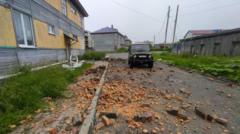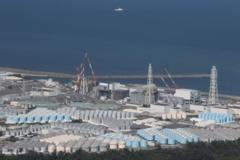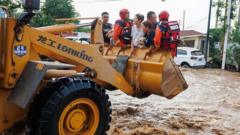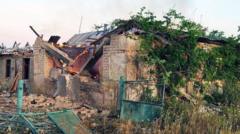An 8.8 magnitude earthquake off Russia's coast has led to extensive tsunami warnings and evacuations in Japan, the U.S. west coast, and as far as China and Peru. Damage reports indicate flooding and infrastructure disruptions.
Tsunami Alerts Issued After Powerful 8.8 Magnitude Earthquake Strikes Near Russia
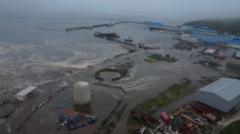
Tsunami Alerts Issued After Powerful 8.8 Magnitude Earthquake Strikes Near Russia
An unprecedented earthquake near Russia's Kamchatka Peninsula has triggered widespread tsunami warnings across the Pacific, prompting mass evacuations in multiple countries.
A significant earthquake, measured at 8.8 on the Richter scale, struck near the Kamchatka Peninsula in Russia at approximately 11:25 AM local time (00:25 AM BST) on Wednesday. This seismic event has resulted in tsunami alerts across the Pacific, raising alarm in several countries including Japan, the United States, China, and as far away as Peru and Mexico.
Authorities have ordered millions of residents to evacuate in response to the potential threat of tsunami waves. In Japan, around 1.9 million individuals are being urged to seek higher ground, with some finding shelter on rooftops in Hokkaido. Meanwhile, Hawaii's Governor Josh Green warned of possible 10ft tsunami waves but noted that no significant wave impact had yet been observed. The governor indicated that further assessments would take additional hours.
Initial reports suggest significant damage in the town of Severo-Kurilsk in Russia. Footage emerged of large waves inundating buildings, while local authorities reported flooding at the port and damage to a fish processing facility. The Sakhalin region’s power grid also sustained damage.
As experts assess the situation, detailed forecasts remain complex due to the unpredictable nature of tsunami waves traveling across the Pacific Ocean. Chris Goldfinger, a marine geology professor at Oregon State University, explained that the damage will be localized, with some areas potentially facing severe impacts while others may experience minimal disruption. The speed of the tsunami is expected to reach U.S. west coast locations, such as British Columbia and California, within hours, continuing to travel thereafter toward Nome, Alaska.
The earthquake was recorded at a relatively shallow depth of 19.3 km (12 miles) and was initially categorized as 8.0 magnitude before being revised. This earthquake ranks among the top six most powerful in recorded history, with parallels drawn to other significant quakes, including a 1952 quake in the same region that was history’s first documented magnitude 9 event. In comparison, the deadly Indian Ocean earthquake of 2004 reached 9.2-9.3 on the scale, leading to widespread devastation.
As the region and the globe respond, continuous updates and assessments are critical in managing the aftermath of this extraordinary seismic event.


